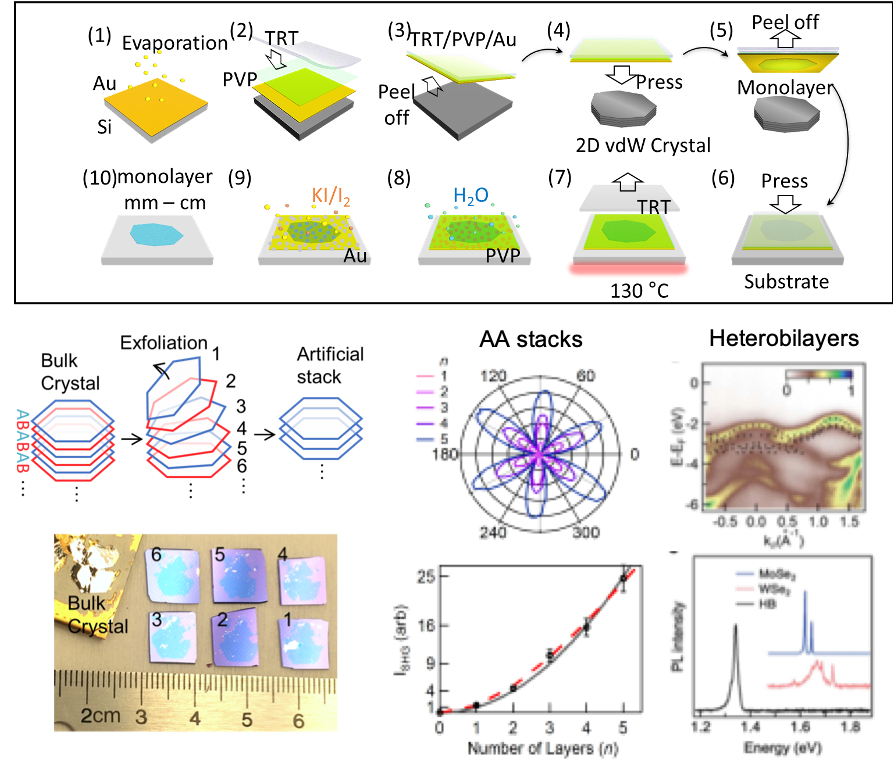 Two-dimensional materials from layered van der Waals (vdW) crystals hold great promise for electronic, optoelectronic, and quantum devices, but current technological implementation will be hampered by the lack of high-throughput techniques for exfoliating single-crystal monolayers with sufficient size and high quality.
Two-dimensional materials from layered van der Waals (vdW) crystals hold great promise for electronic, optoelectronic, and quantum devices, but current technological implementation will be hampered by the lack of high-throughput techniques for exfoliating single-crystal monolayers with sufficient size and high quality.
The Zhu group developed a facile method to disassemble vdW single crystals layer by layer into monolayers with near-unity yield and with dimensions limited only by bulk crystal sizes (scheme shown on top). The macroscopic monolayers are comparable in quality to microscopic monolayers from conventional Scotch tape exfoliation. (Image of sample in bottom left) The monolayers can be assembled into macroscopic artificial structures, including transition metal dichalcogenide multilayers with broken inversion symmetry and substantially enhanced nonlinear optical response (bottom middle), as well as heterobilayers with clean interface and bright interlayer exciton emission (bottom right).
This approach brings the group one step closer to mass production of macroscopic monolayers and bulk-like artificial materials with controllable properties.